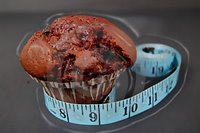Hilton Head Metabolism Diet
 The Hilton Head Metabolism Diet derives from observation, and evidence from subsequent study, that a person's metabolism burns 70% of all daily calories - the remainder is burned through physical activity. So the main problem in people who are overweight is their body's failure to burn calories efficiently through metabolism. Metabolism is the action or the result of chemical processes occurring in living organisms and cells that are necessary to maintain life, breaking down some substances to yield energy for vital processes, and synthesizing other substances.
The Hilton Head Metabolism Diet derives from observation, and evidence from subsequent study, that a person's metabolism burns 70% of all daily calories - the remainder is burned through physical activity. So the main problem in people who are overweight is their body's failure to burn calories efficiently through metabolism. Metabolism is the action or the result of chemical processes occurring in living organisms and cells that are necessary to maintain life, breaking down some substances to yield energy for vital processes, and synthesizing other substances.This program works by changing your body chemistry to burn fat naturally, so that even though you eat five times a day the weight will drop off. The program is in two (repeated) stages. The first stage comprises six weeks of weight reduction, and in the second two-week stage you follow a weight maintenance diet. This cycle is repeated until the ideal weight is achieved. In other words, 6 weeks to drop off pounds, 2 weeks to maintain that weight, then repeat this dietary 'stairstepping' as long as necessary.
How the Hilton Head Diet operates
The weight reduction or low-calorie stage involves eating three meals a day plus two snacks (equivalent to no more than about 1,000 calories a day), in a well-structured, low-fat, high-carbohydrate plan. Weight loss through metabolic activity is quicker on several 'minimeals' a day than on one or two large meals. On weekends the metabolism can be boosted (and the diet varied) by adding 200 to 250 calories each day.
The maintenance stage (also low-fat, high-carb) bases calorie intake on individual needs as determined by the plan.
In the meal plans, all portions must be measured and nothing skipped, no salt is permitted, and multivitamin/mineral and calcium supplements may be recommended. Daily meal plans restrict calories from fat to under 20% of total, and fat consumption is no more than 15 to 20 g. Drink daily at least five 8-ounce or 250-ml glasses of water (or other no-caloric and no-caffeinated beverages).
Daily exercise is required (two 20-minute walks or equivalent, substituted two/three times a week by a 20-minute session of muscle-firming exercises).
Sample plan for weekday low-calorie meal
Breakfast
1 oat bran English muffin with 1 tbspn low-sugar jam or jelly
¾ cup skim milk or 1% fat
1 banana
coffee or tea with sugar substitute
Lunch
Tuna salad sandwich (¼ cup tuna salad on 2 slices of low-calorie whole wheat bread, with lettuce and 2 slices of tomato)
6 raw baby carrot sticks
choice of any no-caloric or low-calorie beverage
Snack
1 apple
Dinner
Pasta (1¼ cups of cooked pasta with ½ cup tomato sauce)
Salad (small dinner salad with lettuce, tomato, cucumber, and 1 tbspn low-fat dressing of choice)
any no-caloric or low-calorie beverage
Snack
4 cups air-popped popcorn (no butter or salt)
Conclusion
The structured plan of the Hilton Head Metabolism Diet suits many people, but may be too rigid or demanding for you personally, especially for a larger-framed man. If so, the daily calorie intake may be increased (use the boosted weekend plan all week, or increase portion sizes), requiring more weight-loss/maintenance cycles to achieve the objective.
Take Free Diet Personality Test Today!
0 Comments:
Post a Comment
<< Home